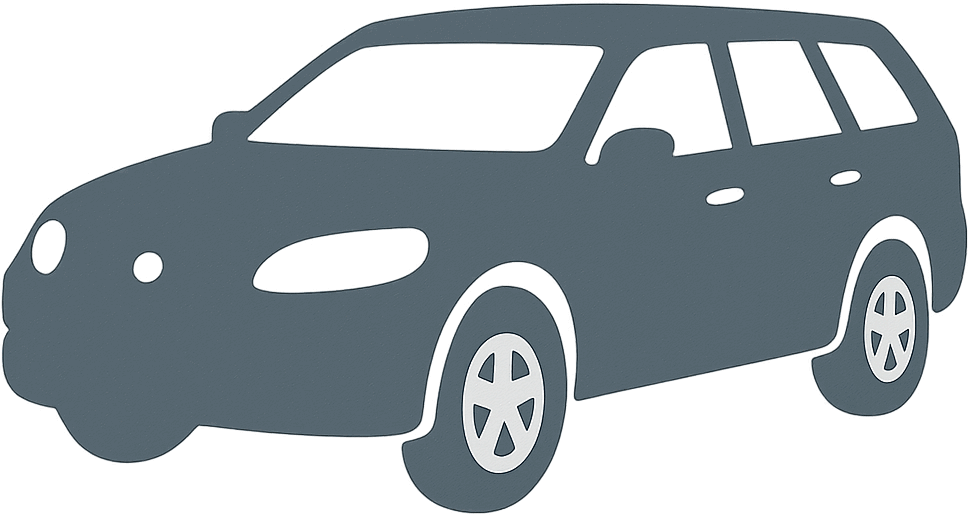 1964 Trabant P 601 Universal Dimensions, Size & Specs
1964 Trabant P 601 Universal Dimensions, Size & Specs
Measurements of the 1964 Trabant P 601 Universal, engineered for optimal performance and comfort
| Dimensions | |
|---|---|
| Length: | 3560 mm140.2 in11.7 ft |
| Width: | 1510 mm59.4 in5.0 ft |
| Height: | 1437 mm56.6 in4.7 ft |
| Trunk Capacity: | 450 liter15.9 cu ft |
| Trunk Capacity (Max): | 1400 liter49.4 cu ft |
| Weight Specifications | |
| Curb Weight: | 650 kg1433 lbs |
| Maximal permitted Weight: | 1040 kg2293 lbs |
| Tire Specifications | |
| Rims Size: | Other Rims:
|
| Tire Size: |
|
The Trabant P 601 Universal, introduced in 1964 and produced from 1963 to 1990, is a classic East German station wagon known for its compact size and practical design. Measuring 3560 mm (140.2 inches) in length, 1510 mm (59.4 inches) in width, and 1437 mm (56.6 inches) in height, this vehicle fits comfortably in city environments while offering a surprisingly spacious cargo area. Weighing only 650 kg (1433 lbs) curb weight, the P 601 Universal is lightweight, contributing to its fuel efficiency and ease of handling.
The design emphasizes utility, with a maximum vehicle weight of 1040 kg (2293 lbs) and a luggage capacity of 450 liters (15.9 cubic feet), which expands impressively to 1400 liters (49.4 cubic feet) when the rear seats are folded down. This flexibility allowed the Trabant P 601 Universal to serve various daily transport needs, from family outings to small cargo hauling. The vehicle rides on 4JX13H-45 rims outfitted with 145/80 SR13 tires, balancing compact dimensions with sufficient road contact for stable drive dynamics.
As a symbol of affordable East German automotive engineering, the Trabant P 601 Universal is cherished by vintage car enthusiasts. Its modest size and lightweight construction make it a unique member among station wagons, offering a blend of traditional simplicity and practical usability not commonly found in modern vehicles of similar class.
Discover the standout features that make the 1964 Trabant P 601 Universal a leader in its class
Have a question? Please check our knowledgebase first.
The Trabant P 601 Universal station wagon measures 3560 mm (140.2 inches) in length, 1510 mm (59.4 inches) in width, and 1437 mm (56.6 inches) in height. These compact dimensions reflect the car's design focus on simplicity and efficiency within a small footprint, typical for Eastern European vehicles in its era.
The curb weight of the Trabant P 601 Universal is approximately 650 kg (1433 lbs), which is notably light for a station wagon. Its maximum permissible weight reaches up to 1040 kg (2293 lbs). This relatively low weight is due to the car's simple construction and use of lightweight materials like duroplast for the body panels.
The luggage capacity of the Trabant P 601 Universal is 450 liters (about 15.9 cubic feet) with the rear seats in their upright position. When the rear seats are folded down, the capacity significantly expands to 1400 liters (approximately 49.4 cubic feet). This makes it a practical choice for carrying larger loads or bulky items despite its small size.
The Trabant P 601 Universal, with a length of 3560 mm (140.2 inches), width of 1510 mm (59.4 inches), and height of 1437 mm (56.6 inches), generally fits comfortably into a standard single-car garage. Standard garages typically measure around 2.4 to 3 meters wide (7.9 to 9.8 feet) and 5 to 6 meters long (16.4 to 19.7 feet), so the vehicle's compact measurements align well with these dimensions, leaving ample room for maneuvering.
Compared to the Trabant P 601 sedan, the Universal station wagon shares the same basic length of 3560 mm (140.2 inches) and width of 1510 mm (59.4 inches), but differs mainly in its rear design and increased cargo capacity. The Universal variant features a taller and more practical body for additional storage and utility, reflected in its substantial 1400-liter luggage capacity with seats folded, while the sedan offers less cargo space due to its fixed roof and smaller trunk.
When compared to similarly classed 1960s station wagons from Western Europe and beyond, the Trabant P 601 Universal is considerably smaller and lighter. For example, typical Western European wagons measured around 4000 mm to 4500 mm (157 to 177 inches) in length and weighed significantly more. The Trabant's compact size and curb weight of 650 kg (1433 lbs) make it an economical and maneuverable option, though it offers less interior space and modern amenities.
The Trabant P 601 Universal is equipped with rims sized 4JX13H-45 and tires with the dimension 145/80 SR13. These relatively narrow 13-inch tires and rims complement the car's lightweight and compact design, contributing to modest handling characteristics and ease of maintenance typical for vehicles of its class and era.
The compact dimensions of the Trabant P 601 Universal—just 3560 mm (140.2 inches) long and 1510 mm (59.4 inches) wide—make it highly suitable for urban environments. Its small footprint allows for easy navigation through tight city streets and convenient parking in limited spaces. Additionally, the lightweight body enhances agility, making it practical even on narrow roads or crowded areas typical of mid-20th-century European towns.
The small size and light weight of the Trabant P 601 Universal directly contribute to its modest fuel consumption and manageable performance characteristics. Weighing only 650 kg (1433 lbs), the vehicle requires less power to move, resulting in better fuel economy—important during the car's production era when efficiency and affordability were key. However, its performance was modest compared to larger, heavier cars, reflecting its focus on economy rather than speed or luxury.
Yes, the Trabant P 601 Universal, being a station wagon, offers practicality well-suited for a small family's needs. With ample luggage space of 450 liters (15.9 cubic feet) with seats up, expanding to 1400 liters (49.4 cubic feet) with seats folded, it can carry daily essentials, groceries, and small furniture comfortably. The compact interior space prioritizes efficient use over luxury, but the vehicle accommodates passengers and cargo adequately for its segment and time.
